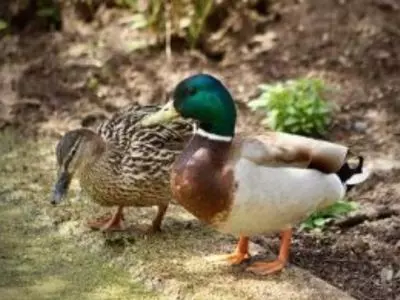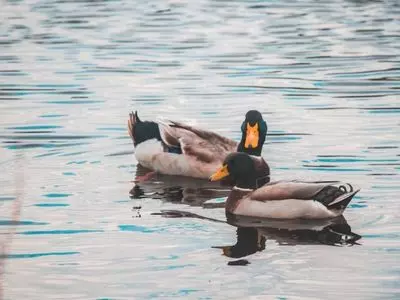No products in the cart.
Ducks
Why Do Ducks Wag Their Tails? (7 REASONS)
If you’re a bird watcher you’ve probably seen ducks wiggling their tails. Why DO ducks why their tails? Ducks will wag their tails to shake off water, during mating season (a trait often seen in male ducks), and believe it or not when they’re excited! We’re going to go over why ducks wag their tail, what it can mean, and anything else you’d want to know.
*This post may have affiliate links, which means I may receive commissions if you choose to purchase through links I provide (at no extra cost to you). As an Amazon Associate I earn from qualifying purchases. Please read my disclaimer for additional details.
Why Do Ducks Wag Their Tails?

- The majority of duck keepers have noticed that their ducks’ tails wag when they are delighted or in a good mood.
- During the mating season, they will also wag their tails to either locate or attract a potential mate.
- It’s possible that it’s simply the product of normal waddling and does not indicate anything at all.
Being Excited
When they are very happy, ducks will often wag their tails, flap their wings, and move excitedly. In general, ducks will wiggle their tails when they are in a good mood or when they are joyful. They’ll often wag their tails when seeing other ducks, their owner, food, or just after having fun swimming in a pond. Here’s a great video showing a very happy duck as they are greeted by its owner: Read More: How Long Can Ducks Stay Underwater? If you’ve ever seen a diving duck, you may wonder how long it can stay under the surface. Learn more!It’s Mating Season
When they detect the presence of a female duck, male ducks will vigorously shake their tails and wings in an attempt to get the attention of the female duck. This is how ducks court one another and how the male tries to woo the female to mate with him. It’s common for additional particular mating behaviors, like fluttering the wings, preening, and head pumping, to occur alongside tail wagging. The fact that farmed ducks breed at any time of the year indicates that their tail-wagging behavior is not seasonal, so you’re likely to see tail-wagging as a result of mating year-round. Read our related article, Do ducks keep the same mate for life? to learn more about duck mating behavior!Shaking Off Water
Ducks spend a significant amount of time in the water due to their semi-aquatic lifestyle. After a swim, it’s pretty normal to see them flap their wings and wag their tails to shake the water off. Along with the special waxy coating on their feathers, shaking off any excess water helps their feathers to air dry quickly. Read More: What Does it Mean When a Duck Shakes? Shivering could be an indicator of disease. Be on the lookout for these signs!Just Waddling
Waddling is the characteristic gait of ducks, which consists of short, awkward steps and a swaying motion. The movement of their tail helps them maintain a healthy weight balance. When ducks waddle, their bodies change from side to side and they use their tails to counterbalance the weight of their bodies which can look like they are wagging their tails. Read More: Do Ducks Have 2 Legs? Can their wings also be called legs? Here’s ALL you need to know about a duck’s legs.Soothing After Stress


